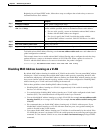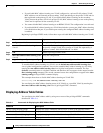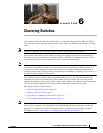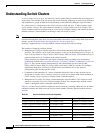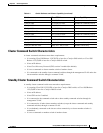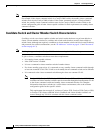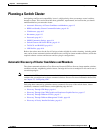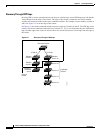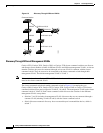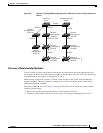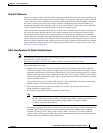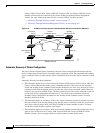
6-5
Catalyst 2960 and 2960-S Switch Software Configuration Guide
OL-8603-09
Chapter 6 Clustering Switches
Planning a Switch Cluster
Planning a Switch Cluster
Anticipating conflicts and compatibility issues is a high priority when you manage several switches
through a cluster. This section describes these guidelines, requirements, and caveats that you should
understand before you create the cluster:
• Automatic Discovery of Cluster Candidates and Members, page 6-5
• HSRP and Standby Cluster Command Switches, page 6-10
• IP Addresses, page 6-13
• Hostnames, page 6-13
• Passwords, page 6-13
• SNMP Community Strings, page 6-14
• Switch Clusters and Switch Stacks, page 6-14
• TACACS+ and RADIUS, page 6-16
• LRE Profiles, page 6-16
Refer to the release notes for the list of Catalyst switches eligible for switch clustering, including which
ones can be cluster command switches and which ones can only be cluster member switches, and for the
required software versions and browser and Java plug-in configurations.
Automatic Discovery of Cluster Candidates and Members
The cluster command switch uses Cisco Discovery Protocol (CDP) to discover cluster member switches,
candidate switches, neighboring switch clusters, and edge devices across multiple VLANs and in star or
cascaded topologies.
Note Do not disable CDP on the cluster command switch, on cluster members, or on any cluster-capable
switches that you might want a cluster command switch to discover. For more information about CDP,
see Chapter 25, “Configuring CDP.”
Following these connectivity guidelines ensures automatic discovery of the switch cluster, cluster
candidates, connected switch clusters, and neighboring edge devices:
• Discovery Through CDP Hops, page 6-6
• Discovery Through Non-CDP-Capable and Noncluster-Capable Devices, page 6-7
• Discovery Through Different VLANs, page 6-7
• Discovery Through Different Management VLANs, page 6-8
• Discovery of Newly Installed Switches, page 6-9



